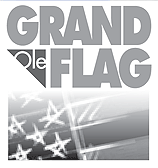 |
||||||||||||
|
September/October 2015 The Pledge: A History of Change BY MARC LEEPSON
The words those children spoke that day were: “I pledge allegiance to my flag and the republic for which it stands; one nation indivisible, with liberty and justice for all.” Those memorable lines came from the pen of Francis Bellamy, who wrote them for that year’s National Columbian Public School Celebration. Bellamy, an editor of The Youth’s Companion magazine, also was an ordained Baptist minister. Despite his long involvement with the church, Bellamy wrote the Pledge without any reference to religion. The Pledge became an integral part of what was known as the schoolhouse flag movement, a campaign spearheaded by the Grand Army of the Republic to put the Stars and Stripes in all of the nation’s schools. The idea was to gain the allegiance of millions of immigrant schoolchildren. Bellamy chose the words “one nation indivisible,” he said, to promote post-Civil-War reconciliation. As for “liberty and justice for all,” Bellamy was inspired by “Liberty, Equality, and Fraternity,” as he put it, the “historic slogan of the French Revolution, which meant so much to Jefferson and his friends.” His words have been altered three times. The first change came after Bellamy heard thousands of students in Boston recite the pledge on October 12, 1892. He changed the cadence slightly: “I pledge allegiance to my flag and to the republic….” Six years later New York became the first state to mandate that students recite the Pledge in public schools at the beginning of the school day. Other states soon followed suit. The second change came at the National Flag Conference in Washington, D.C., in 1923 and 1924, during which dozens of veterans’ and patriotic groups met to draw up a national Flag Code. The conference replaced the words “my flag” with, first, “the flag of the United States,” and, later with “the flag of the United States of America.” On June 22, 1942, Congress officially recognized the Pledge by including it in the new U.S. Flag Code. In 1945, it became known officially as the Pledge of Allegiance. The third change, adding “under God,” came about in 1954 as the result of a national campaign by the Knights of Columbus and with the strong support of President Eisenhower during the Cold War. The Pledge was almost completely confined to school classrooms until 1988 when it became an issue in the presidential campaign between George H.W. Bush and Michael Dukakis. Bush criticized Dukakis for vetoing a bill that would have required the Pledge to be recited in Massachusetts public schools when he was governor in 1977. Dukakis said that he vetoed the legislation after being advised it was unconstitutional. During the height of the campaign, on September 13, 1988, the Pledge was recited on the floor of the House of Representatives for the first time.The U.S. Senate did not adopt the daily recital of the Pledge until June 24, 1999. Since then, the Pledge of Allegiance has morphed from a children’s procedure into one that adults use at every level of government—and that veterans, patriotic, and hereditary groups have adopted as part of their opening rituals at meetings, conventions, conferences, and other events.
|
||||||||||||
|
|
||||||||||||
|
||||||||||||
8719 Colesville Road, Suite 100, Silver Spring. MD 20910 | www.vva.org | contact us |
||||||||||||


















 No other nation in the world has anything like our Pledge of Allegiance. The Pledge dates from October 12, 1892, when millions of schoolchildren recited it as part of a nationwide 400th anniversary celebration of Columbus’s voyage.
No other nation in the world has anything like our Pledge of Allegiance. The Pledge dates from October 12, 1892, when millions of schoolchildren recited it as part of a nationwide 400th anniversary celebration of Columbus’s voyage.